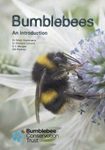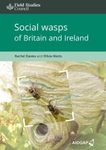By
Leon (NHBS Catalogue Editor)
19 Dec 2022
Written for Hardback

It has to be one of the more delightful details of the natural world: the ecosystem of an ant's nest is home to its own constellation of creatures that specialise in living within or nearby it. Daniel Kronauer's book
Army Ants first drew my attention to these so-called myrmecophiles and their sometimes bizarre adaptations. I was stoked when Harvard University Press announced it would publish a monograph focusing on just this aspect of ant biology, authored by entomology professors Bert Hölldobler (a frequent co-author to E.O. Wilson) and Christina L. Kwapich.
The Guests of Ants gives a beautifully illustrated, wide-ranging, and critical literature review of this delightful corner of myrmecology. Will ants make it to my personal top 5 for a third-year running? This book is a very strong contender.
Before delving in, a quick word on what is not in the book. Excluded are the large topic of interactions between ants and plants, the subject of trophobiosis (i.e. the bugs and some butterflies that provide honeydew to ants and in return are protected by them), and the hundreds of socially parasitic ant species that exploit other ants. This book is also not an exhaustive listing of all known myrmecophiles, as done in review papers and books such as
Parasites in Social Insects and
The Ants. Instead, Hölldobler & Kwapich use numerous examples to review the behavioural mechanisms by which myrmecophiles coexist and often exploit their hosts. How do they break the internal communication codes that otherwise make ants such a successful superorganism? This self-imposed limitation nevertheless leaves plenty of material and the first thing that will strike you is the book's sheer size. Measuring some 24 × 24.5 cm it is as big as
Army Ants, though it is a good deal thicker. What it shares is that it is chock-a-block with glorious macro-photography. The acknowledgements thank no fewer than 84 people for providing (mostly) photos and illustrations and the book is a feast for the eyes.
So who are these guests? Beyond two chapters on the really small (bacteria, internal parasites, and fungi such as crowd-pleaser
Ophiocordyceps) and the really large (vertebrates including birds, lizards, and amphibians), most myrmecophiles are arthropods. Some flies and beetles rely on chemical mimicry to blend in and e.g. hitch a ride on ant bodies, lay their eggs inside the protected environment of ant nests, or forage here for detritus and ant corpses. Caterpillars of lycaenid butterflies possess glands that secrete so-called appeasement substances, allowing them to live amidst ants as mutualists, parasites, or even predators. Refuse sites inside the nest, and foraging trails outside it, host numerous beetles and flies that steal booty and prey the ants bring home, or attack the ants directly. Crickets behave as thieves, technically as kleptoparasites. Using a mixture of chemical stimuli, such as odours, and tactile stimuli, such as antennae and mouthparts with which they tickle ants, they either get ants to regurgitate liquid food for them (as seen on the book's cover) or get in between two ants practicising what biologists call trophallaxis, the transfer of food between each other. But the most mind-blowing chapter showcases the unbelievable morphological and behavioural mimicry of certain spiders. Some spiders, as they grow larger, resemble different ant species in turn. Other spiders use parts of their body such as chelicerae (mouth parts) and fold these in front of their heads to resemble an ant carrying a nestmate.
The above is just a small selection of a mind-bogglingly diverse cast of myrmecophiles. Two further chapters focus more on underlying explanations. One looks at a possible evolutionary pathway that explains how free-living insects became fully integrated into ant nests, illustrating it through studies on different rove beetles. The other chapter looks at various ant ecosystems and their guests, including harvest ants, wood ants, and army ants. It also discusses studies that have tried to apply network analyses to document foodweb interactions (i.e. myrmecophiles eating ants and each other), and studies that have looked at links between colony traits, such as genetic diversity, and rates of myrmecophile infestation.
A few things struck me in particular about this book. First is the amount of detail. The authors thoroughly show just how diverse are myrmecophiles and the ways in which they trick ants. If I have to sound a critical note, it is that, though the individual chapters are organised around themes, I was missing a final chapter to tie it together and provide some sort of overview or tabulation. The bewildering diversity, fascinating as it is, now remains just that: bewildering. But perhaps that is the nature of the beast. Second was a fascinating lesson on cuticular hydrocarbons. These are carbon-and-hydrogen-containing chemicals that insects sport on their outer layer, their cuticle, as a kind of chemical signature. You would think that mimicking or acquiring cuticular hydrocarbons is key for myrmecophiles to be accepted or ignored by ants, rather than attacked and killed. But numerous studies have thrown up conflicting results: "we have to guard against a hasty conclusion that the hydrocarbon match represents the effective mechanism for the acceptance of myrmecophiles by their hosts" (p. 147). Other chemicals as well as behaviour seem to play an overriding role in some species. Third and final was a welcome critical attitude from the authors in their review. They frequently point out shortcomings in experimental protocols, comment on the appropriateness of certain methods, and tone down sweeping conclusions. None of this is mean-spirited but is done to encourage rigorous experimental protocols. The ecosystem of ants and their guests is incredibly complex and studying them is hard; drawing firm conclusions requires excluding alternative explanations.
The Guests of Ants is a must for myrmecologists and entomologists, but also more generally for biologists with an interest in social insects and insect ecology. The book provides a welcome entry point into a remarkably rich literature (45 pages of references are provided). The work is detailed and fairly, but not overtly, technical; effectively this is at the level of a series of literature reviews as one might find in e.g.
Trends in Ecology & Evolution. There is nothing here that amateur entomologists or an interested lay audience could not handle, with a 14-page glossary taking care of technical terms. For my part, I have to congratulate the publisher for producing yet another exquisitely presented, in-depth monograph on ants that highlights a thoroughly engrossing aspect of these fascinating insects.




















![Die Gaste der Ameisen: Wie Myrmecophile mit ihren Wirten interagieren [The Guests of Ants How Myrmecophiles Interact with Their Hosts] Die Gaste der Ameisen: Wie Myrmecophile mit ihren Wirten interagieren [The Guests of Ants How Myrmecophiles Interact with Their Hosts]](http://mediacdn.nhbs.com/jackets/jackets_resizer/26/262722.jpg)



























